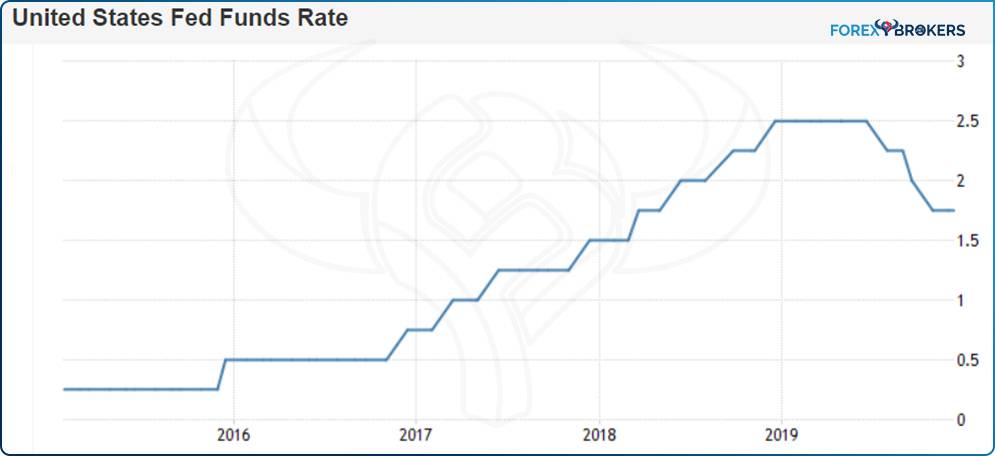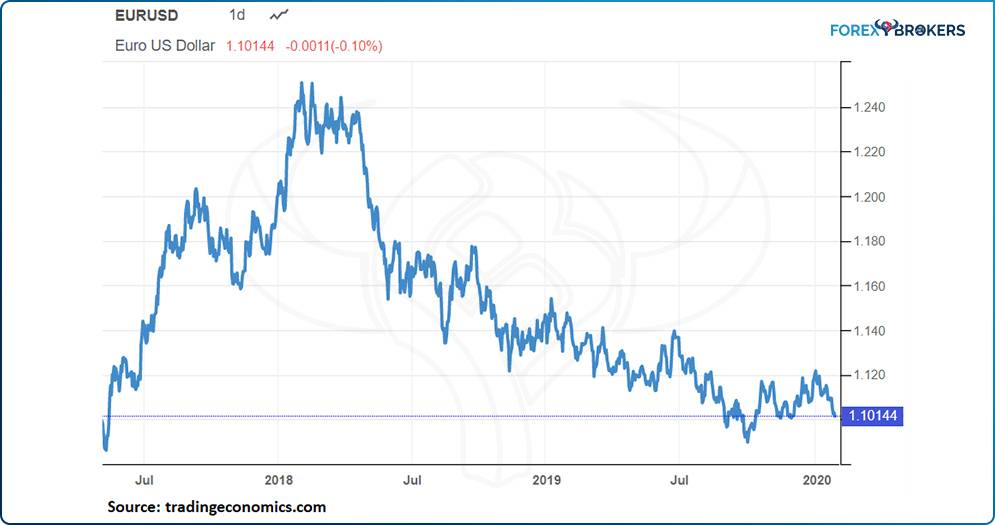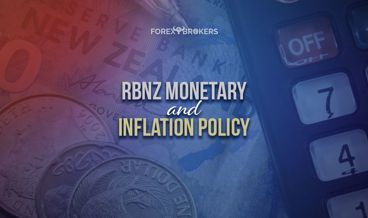Nonfarm payrolls (NFP) in the United States are a key piece of economic data creating much volatility on financial markets. The currency market, in particular, reacts strongly to NFP release because of trading algorithms reacting at the same time and in an identical manner.
For any economy, employment data is crucial for a country’s economic performance and its population’s well-being. Strong employment brings available income to spend on goods and services and keeps the economy on a growing path. Meanwhile, poor employment leads to social unrest, economic recessions and/or depressions, and overall economic instability.
However, the NFP is more than just employment data out of the United States. The explanation is twofold.
First, the mandate of the United States Federal Reserve (Fed) includes a maximum employment goal. Unlike any other central bank in the world, the Fed considers not only stable prices and moderate long-term interest rates but also maximum employment. Therefore, whenever there is a change in the overall employment levels in the United States, or whenever the NFP is released, markets react in anticipation of what the Fed will do with the interest rates.
Second, the U.S. dollar (USD) continues to be the world’s reserve currency. Because of this, the Fed remains the most influential central bank in the world. It means that its monetary policy is most likely copied by other central banks in developed countries – and traders know that in advance.
Thus, not only is the NFP day special to traders of all markets, but the entire NFP week also distinguishes itself as the most important one in any trading month. This article aims to reveal everything about the NFP release but also other factors to consider during NFP week.
Understanding Employment in the United States
Together with productivity, employment provides an educated guess about the overall economic stance. For example, high and rising unemployment, coupled with declining working hours and falling productivity, suggests a bleak economic outlook. The first thing businesses do is to cut back employees’ hours. Next, businesses lay off employees, further increasing the unemployment rate.
For any country, the employment component is critical in understanding the business cycle and in positioning for the next phase. This is particularly true in the United States, and it explains the existence of many economic indicators related to the job market when compared with other countries.
For instance, in the Eurozone, the unemployment rate is the only economic indicator referring to the job market. Moreover, when released, it does not create the volatility seen during NFP release or from other jobs indicators in the United States.
Is this because the Eurozone economy is smaller than the United States’? Or because employment is secondary in importance in Europe? Of course not. The European Central Bank (ECB) has a different mandate, focusing on inflation targeting rather than creating sustainable employment. For the ECB and most other central banks in the developed world, high employment levels are welcomed, but they are viewed as a consequence of adequate monetary policy via inflation rate targeting.
Because of the influence of the employment level on the Fed’s decision to raise or cut interest rates, investors and traders of all markets dig deeply into the labor market details to find out what the Fed is about to do next.

Terminology for the Job Market
Before interpreting the job market, any trader must be familiar not only with the terms and terminology but also with some of the collateral economic releases that may suggest the NFP outcome. Because the Fed is targeting maximum employment when setting monetary policy, the jobs market data out of the United States is of interest to any market participant.
The first thing to know is that an employed person is one who has a job. However, in this category, we do not count certain workers, such as unlicensed cab drivers or illegal workers. Second, an unemployed person is one who actively seeks employment but currently has no job. It could be that the person is frictionally unemployed (i.e., when the statistics are filled, the person is not working because they look for a job to match their skills) or just long-term unemployed (i.e., jobless for more than a few months but still looks for one).
Moreover, some people do not want or need to work. These are called voluntarily unemployed, and they do not count in the total labor force. Speaking of the labor force, it is made of the total number of people who either have a job or are actively involved in the process of looking for one. Students, children, or retirees do not count as members of the labor force.
The unemployment rate shows the ratio of unemployed people to the labor force, and it is released at the same time with the NFP figures. The higher the unemployment rate in an economy, the worse for the economic performance and for the currency—traders react by selling the currency. Conversely, the lower the unemployment rate, the better for the economy and for the currency, as the Fed gets closer to maximum employment and will react by raising the federal reserve rate.
NFP Week
Released every first Friday of each trading month, the NFP data comes out together with the unemployment rate and other data referring to the job market. Because of its importance, many traders prefer not to trade for the month until the NFP becomes public.
The entire NFP week is special. Typically Monday begins with very tight ranges, as traders do not want to take any chances.
At least when it comes to the EURUSD pair, NFP week is characterized by little or no movement if we compare the start of the trading week and the levels before the NFP release. If, for instance, the EURUSD advances a big figure (i.e., a hundred pips) on Monday, chances are the entire move will be retraced by Tuesday or Wednesday, and the market will consolidate until Friday’s NFP release.
NFP week typically has many other important economic events scheduled. Often, the Reserve Bank of Australia (RBA) announces its cash rate decision, the United States Institute for Supply Management (ISM) releases the ISM Manufacturing or Non-Manufacturing, and so on. But nothing is to be expected from markets as participants dig for clues about what the NFP data will show.
Therefore, the employment component in the two ISM releases is important. Also, on the Wednesday of NFP week, the ADP Research Institute or private payrolls release offers a clue about what the NFP number may look like, although often the two releases diverge.
Overall, NFP week is full of divergences and chaotic moves. Trading algorithms dominate the price action both before Friday’s release and after it. Before Friday, typically trading overbought and oversold levels on USD pairs using an oscillator works well most of the time. After the release, the horizon for closing a trade should expand to the next week.
Interpreting the Labor Data
For a full understanding of the jobs market and its impact on the Fed’s future decisions, traders must dig beyond the actual NFP release. For this, the Employment Situation Summary report comes in handy.
Released by the U.S. Bureau of Labor Statistics, it is publicly available on the bureau’s website (an official website of the United States government). It offers a complete view of the United States labor market for the previous month. For instance, the release on January 10, 2020, refers to the month of December 2019—we will use this release to point out the things to look for in the Employment Situation Summary other than the NFP number.

Employment Situation Summary
Every Employment Situation Summary begins with the total NFP employment corresponding to the previous month. Also, the unemployment rate and the sectors that gained and lost the most workers are typically highlighted within the first paragraph.
The first paragraph is of critical importance when trading in the currency market. The trading algorithms buy or sell the USD depending on whether the NFP number and/or the unemployment rate beat expectations. It is a race against time, as the fastest algorithm to read the release, the more the profit. Moreover, because all the algorithms buy or sell following the same set of instructions, it explains the strong reaction of the market on the NFP release regardless of whether the number beats expectations.
After the first paragraph, more details follow. As a trader, by the time you end up scrolling down manually on the Employment Situation Summary report, the market had already made the bulk of its NFP movement. This is not a problem, however, as the most important thing is to understand the state of the U.S. labor market correctly and then jump on a trade. Alternatively, simply review the Employment Situation Summary to find out if the open trades make sense under the new job market situation.
The report identifies which worker groups experienced the highest and the lowest unemployment rate—teenagers, whites, blacks, Hispanics, and others. An interesting piece of information about the state of the labor market is given by long-term unemployment (i.e., people without a job for 27 weeks or more). After compiling the data, if a trend develops, and the actual NFP number pointed in the other direction, the data is seen as conflicting.
Labor Force Participation and Part-time Employment
The labor force participation influences the unemployment rate in the sense that the more people participate in the labor force, the more accurate the unemployment rate. In the United States, in December 2019, the labor force participation rate was a little over 63%. Moreover, the employment–population ratio remained stable at the same level as in the last four months of the year but was up 0.4% when compared with the previous year.
Part-time employment figures matter as well. When looking at the job numbers, the ideal environment is that all jobs are full-time jobs. The more part-timers, the less impressive the NFP number is.
Because these persons would prefer full-time employment, a high and rising number of part-timers suggests that they accepted the situation either because they were unable to find full-time jobs or because their working hours have been reduced by the employer. In both cases, this happens at the peak of the business cycle, and it paints a worrying picture for further economic growth.
- Marginally Attached Workers
These workers often disrupt the jobs data. The higher the number of marginally attached workers, the worse for the overall economic picture. The NFP number or the unemployment rate may beat expectations, but if the marginally attached workers figure is high and rising, it would offer a strong incentive to dismiss the positive NFP data and build a bearish case for both the U.S. economy and the USD.
A marginally attached worker is one who is available for work, wants to work, but is not in the labor force. Such persons do not count as unemployed because they did not look for work in the last four weeks, despite the fact that some time in the last 12 months, they had been actively looking for a job.
It is a big deal if the number is high and rising. In December 2019, there were 1.2 million marginally attached workers, a decline of approximately 300,000 from the previous year. This category also includes discouraged workers, or people who have stopped looking for a job, as they believe there are no jobs for them.
- Other Uses of the NFP Release
The NFP release creates chaos in the currency market. The initial swings created by trading algorithms increase brokers’ spreads and trigger stop-loss orders, and slippage therefore affects trading accounts.
Because financial markets are interconnected, the NFP data has deep implications in other markets. For instance, the Employment Situation Summary gives a detailed information about what sectors gained or lost workers during the previous month.
This is priceless information for stock market traders and investors, as it tells how a specific economic sector performs. In December 2019, one of the top performer sectors was the healthcare sector, which added 28,000 jobs, reaching 399,000 jobs in 2019, exceeding the 350,000 jobs created by the sector in 2018.
Why is this important? For stock traders, the information offers them a perspective about what sector outperforms, and what doesn’t. If a sector continues to employ people, it means the overall business is good, and companies part of that sector will likely outperform the overall market. For currency traders, this represents an opportunity too because a forex account nowadays gives access to many other markets. Using contracts for difference (CFDs) offered by most brokerage houses, traders can easily speculate on the price change of individual stocks listed on various exchanges around the world.

- Average Hourly Earnings and Overtime Hours
Often overlooked by traders, average hourly earnings (AHE) and overtime hours play a key role in the way the USD reacts. While the first reaction is one that creates a sudden spike or drop in USD, details in the Employment Situation Summary help in understanding the full picture of both job creation and, perhaps more importantly, inflation.
Because of the dual mandate of the Fed, traders monitor changes in the AHE number closely. When the AHE beats expectations and is on a rising trend, the pressure on prices becomes evident, as people have more money to spend. It means more disposable income in the end, and the natural tendency is that inflation expectations build up.
In December 2019, the AHE for all NFP increased by 3 cents and by 2.9% for the past 12 months. The Fed will have a hard time delivering rate cuts if the AHE remains elevated and, at the same time, the job market will remain tight.
Overtime hours offer a clue about the phase of the business cycle. Because the unemployment rate is a lagging indicator, overtime hours tell much about what companies do. In an expanding economy, businesses first increase overtime hours and, only after that, start hiring new people. Conversely, in a contracting economy, businesses are reluctant to lay off valuable employees, and overtime is the first one to decrease.
For December 2019, overtime in the United States’ manufacturing sector, for example, remained at 3.2 hours on a 40.5-hour workweek.

The NFP number is often revised higher or lower. Most of the time, the revision refers to the previous month’s data, but sometimes it extends to more months.
Needless to say, revisions distort the initial market reaction and create confusion among trading algorithms. Imagine that trading algorithms buy the USD on the NFP beating the expectations. However, if the NFP release beats the expected number, but then the revisions for the previous month exceed the current month’s increase, the economy actually lost jobs.
Effectively, it means that the market will completely reverse the initial reaction, and the USD gives up all the NFP gains.
The Employment Summary Situation for December 2019 shows that the NFP number was revised to the downside both for October and November of the same year. In total, employment gains were lower, with 14,000 more jobs than initially reported. This is the number to deduct from the December NFP release to form a relevant picture of the United States’ jobs market.
But why do revisions exist? The answer comes from the methodology used to count the jobs. Businesses and government agencies build additional reports since the last public estimates and seasonal factors lead to recalculation.
Revisions do not always go the opposite direction when compared to the NFP release. Many times revisions add fuel to the fire. If the NFP exceeds expectations by far, and the previous data is revised higher too, this is a bullish fundamental picture for the jobs market, and traders begin pricing in a hawkish Fed.
On the other hand, the NFP might miss expectations and the previous month or months’ data to be revised lower. This spells trouble for the USD, as bears will send it lower on a bleak outlook for the jobs market.
Pay Attention to Details
The NFP and overall jobs data should always be viewed with skepticism. This is especially true in the case of the unemployment rate.
Because the labor force expands and declines in response to the economic environment, it means that the unemployment rate points to a past economic condition. When the economy does not go well, discouraged workers do not look for a job anymore and will not be counted as unemployed. This is why sometimes the jobs market looks strong even in recessions.
Next, when the business cycle turns, discouraged workers begin looking for a job again, but they will not find one immediately. This time, the unemployment rate lags the recovery, reflecting a worse picture than reality. The reluctance of businesses to lay off people is another factor that leads to the unemployment rate being a lagging indicator.
Below are the seasonally adjusted reasons for unemployment in the last two decades in the United States. The chart shows not only job losers and persons who completed temporary jobs, reentrants, and new entrants in the job market but also job losers on temporary layoff.

The two gray areas show the last recessions, and it is interesting to compare the segments that react the most during recessionary conditions. Details matter, as a decline in job losers and persons who completed temporary jobs followed the Fed’s easy monetary policy after the 2008 financial crisis, in a similar way as at the start of the century.
How to Trade the NFP Release
So far, this article focused on what the NFP is and the adjacent data presented with it. The overall job market in the United States is complex and contributes significantly to an increase in market volatility.
But how does one trade the NFP release? Several factors are worth considering every month during NFP week and shortly after.
First is the USD. As the world’s reserve currency and the United States currency, the dollar is the first one affected by the NFP. Trading the USD during NFP week is subject to different approaches.
Until Friday, the day of the release, the USD will most likely be stationary. Ranges predominate on major pairs. The only reason why a USD pair may move before the NFP release is an economic report or a central bank decision that influences the other currency in the pair.
It is never wise to enter the NFP release with full exposure on your trading account. Money management is the secret ingredient that makes a trader successful and, if there is any USD open position prior to the NFP data, most likely, the trader intends to keep the trade open for longer.
Ideally, trade the USD on bigger timeframes during NFP week. This way, if the position is hurt based on the NFP release, you will have a chance to add at better levels.
For example, imagine you are long the EURUSD pair based on a bullish trend forming on the daily chart. The series of higher highs and higher lows justifies the bullish stance. However, the NFP number disappoints, the EURUSD pair corrects. Buying the dips in bullish trends makes sense as long as the series of higher highs and higher lows remain in place.
- Avoid Pending Orders When Scalping During the NFP Release
The use of pending orders signals a disciplined approach. This means the trader knows when to enter and exit the market and leaves nothing to chance.
However, sometimes pending orders do more harm than otherwise. This is especially true during the NFP release.
There are two reasons why traders use pending orders. One is to contain a loss—for this, the stop-loss is mandatory.
The other is to enter the market from levels other than the current ones, for instance, when buying from higher levels or selling from lower ones. In trading, this process is known as buying strength or selling weakness.
Because the market’s reaction to the NFP release is so abrupt, buying or selling almost never takes place from the desired level. Instead, slippage affects the entry, sometimes worth a few full pips.
This would not be a problem if traders have a medium- to long-term strategy and use either swing trading or investing as their approach to the market. However, for scalpers, the resulting slippage may ruin the trading strategy and its results.
Imagine a trading strategy that targets only 10 pips per trade. This is a common practice for many scalpers.
If the slippage costs you a couple of pips, it affects the bottom line of the trade and of the overall trading account. As the brokerage house only guarantees an entry when there is a market, if the market travels too fast because of the trading algorithms, slippage affects the entry.
- Late Friday Squeezes
Every currency pair or financial instrument part of the trading account has two prices or quotes: bid and ask. Buying always takes place from the ask, while selling from the bid.
One of the greatest things about trading the currency market is that you can sell something that you do not own as easily as buying it. If you think the price of a currency pair will decline in the near future, just hit the bid price. If the market moves lower, traders mark the profit by squaring the position from the ask price.
Squaring the bid and the ask determines the outcome of a trade—win or loss. On top of the actual distance that the market traveled, the trader pays the broker’s commission, spread, and eventual negative swap for the positions rolled over to the next day.
A typical market action on Friday is caused by traders squaring their positions or being stopped out of them.
Let us use the EURUSD again as an example. Assuming the NFP beats expectations, the EURUSD trades lower on the release. Some bulls will be stopped out of their long positions because of the news’s impact. What does this mean? When squaring the long position, the net effect on the market is a fresh selling order. Remember the bid and ask prices? When the bulls bought, they used the bid price. Now that the stop got hit, the bid price is used to square the position. This phenomenon, known as squeezing, is amplified during Friday’s late afternoon price action, especially during NFP days.
Understanding the Fed’s Mandate
Throughout this academy, we frequently mentioned the role of central banks in market volatility. Because everything in the value of a currency is about its interest rate, the rush to anticipate the next central bank move is key to a trader’s success.
A retrospective look at some currency pairs and how they behaved from a simple interest rate point of view is mind-blowing. Consider the path for the federal fund rate in the United States in the last few years, as shown in the chart below.

The Fed began raising the rates from late 2015 to early 2016. What seemed a simple rate hike from 25 bp at first turned into a full swing tightening cycle. As it turned out, the Fed did not stop all the way until the 2.5% level, something unthinkable a few years earlier in the aftermath of the 2008 financial crisis.
The market, of course, reacted. The USD rose across the board, a trend visible on almost all major pairs. The EURUSD chart below reflects the drop from 1.25 to below 1.10 in a period corresponding to the Fed raising the rates.

Sometimes there is a lag between the Fed’s decisions and market reactions. It takes time for the monetary policy decisions to make their way into the economy. Other times, the market reacts in anticipation. In any case, the interest rate differential plays a crucial role in the valuation of a currency pair. It should be obvious now why understanding the Fed’s mandate means everything for traders—trading in sync with the Fed is what market participants strive to achieve.
The Connection between the Fed’s Mandate and NFP
As the Fed looks at job creation to fulfill its mandate, the NFP and the unemployment rate indicate the Fed’s intentions regarding future interest rates. What was it that triggered the Fed to hike the federal funds so aggressively?
Looking back, we know it was not inflation. With the core inflation rate steady around the 2% level, fulfilling the price stability part of the mandate, the only thing to confirm the Fed’s hawkishness remained the unemployment rate or job creation.

It consistently dropped from above 6% to the current 3.5%, confirming the tight labor market conditions and giving the Fed green light to raise the federal fund rates, creating a wave of USD buying across the forex dashboard.
Therefore, a simple evaluation of inflation and job creation was enough to position on the right side of the market for more than three years. It did not require any technical analysis, news interpretation, and other “noise” that influences prices daily. It only meant being aware of the Fed’s mandate and watching the two components closely.
Conclusion
Jobs creation is important for the economy and governments as well. A healthy jobs market that constantly adds jobs encourages investment, people have money to spend, and the business cycle shows expansion and growth. The key is to balance job creation with price stability—something the Fed tries to do.
While the monetary policy does influence economic growth and the quantity of money in the economy, fiscal measures also help. Think of the Eurozone and the ultra-easy monetary policy in place since 2015. With the interest rate in negative territory and a running quantitative easing (QE) program, the ECB cannot do much more. Some countries, though, have a budget surplus, and fiscal stimulus will spur job creation. Hence, the unemployment rate falls even more, and the economy continues to grow.
The United States did not have negative rates so far. The Fed excludes the idea, but so did other central banks several years ago and then go into the negative territory.
When things go from bad to worse, jobs lost are one of the first indicators of the magnitude of the problem. The steady loss of jobs leads to population unrest, a rise in unemployment benefits, and an increase in the country’s debt to serve higher costs. Recession, or worse, depression, is just around the corner.
For traders, the unemployment rate and jobs data coming out every first Friday of the month are one of the most important economic releases for the currency market. They show if both the dollar and the Fed are on the right path and indicate what traders must do to end up on the same path as well.
























